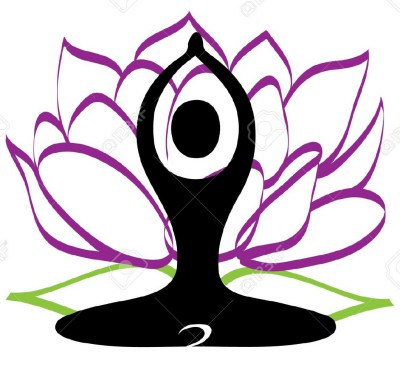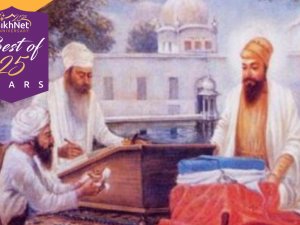Yoga in Sikhism

There has been some debate surrounding the practice of yoga in Sikhism and whether yogic practices are in line with the teachings found within Sri Guru Granth Sahib Ji. In particular, the Sikhs affiliated with the 3HO foundation, founded by Siri Singh Sahib, Harbhajan Singh Yogi Ji have been under particular scrutiny by certain individuals, who claim that yogic practices are in contradiction to the teachings of the Sikh Gurus and that no Sikh should participate in any form of yoga.
Those against the practice of yoga have a tendency to quote lines from the Sikh scriptures to completely dismiss yoga without having or providing any thorough understanding of the complete Shabd or its historical context. After much deliberation and research into Sri Guru Granth Sahib Ji, it is very clear the type of yogis and yogic practices that have been scrutinised. The Sikh Gurus and Bhagats have challenged the objectives attached to the yogic practices and the six schools of philosophy followed by the ascetic Hindu yogis, who led a characterised lifestyle of abstinence from worldly and sensual pleasures, often in pursuit of finding inner peace and liberation.
mukath bhugath jugath sach paaeeai sarab sukhaa kaa dhaathaa ||
Liberation, pleasures, and the true way of life are obtained from the Lord, the Giver of all peace.
apunae dhaas ko bhagath dhaan dhaevai pooran purakh bidhhaathaa ||2||
The Perfect Lord, the Architect of Destiny, blesses His slave with the gift of devotional worship. ||2||
(Guru Arjan Dev Ji; GGSJ: 611)
Despite this, yoga has significantly increased in popularity amongst many Sikh communities around the world to promote the mental and physical well-being. Yoga in itself has many positive benefits, including becoming more flexible to sit for extended periods of time to meditate. It is also a great tool to keep the conscious mind focused on the Shabd or mantra being recited.
jis kai a(n)thar saach vasaavai ||
Those who enshrine the True Lord deep within,
jog jugath kee keemath paavai ||2||
realise the value of the Way of Yoga. ||2||
(Guru Nanak Dev Ji; GGSJ: 223)
1. What is Yoga and what does it mean in contextual terms within Gurbani?
Yoga in very simple terms as we commonly understand it is the physical and mental practice, whether this is through a range of techniques to control the mind and body, to strengthen flexibility or to breathe more fully and consciously.
In Sanskrit 'yoga', derived from the word 'yuj', which means union is a term ricocheted throughout Gurbani. In particular, Hinduism emphasises that the physical and mental yogic practices are necessary to attain liberation (Moksha). In contrast to Sikhism, Sri Guru Granth Sahib Ji continually dismisses this notion that one will attain liberation through performing various yogic postures, such as breathing techniques or ritualistic practices.
Gurbani clearly states that the highest form of yoga is meditation. For a Sikh to achieve liberation or union (yog) with God (the Supreme Yogi) one must remain absorbed in meditation upon the Lord's Name; this is the best way of yoga. Without the Lord's Name, True yoga (union) is never attained.
poorae gur thae naam paaeiaa jaae ||
Through the Perfect Guru, one obtains the Naam, the Name of the Lord.
jog jugath sach rehai samaae ||
The Way of Yoga is to remain absorbed in Truth.
(Guru Nanak Dev Ji; GGSJ: 941)
naamae naam rehai bairaagee saach rakhiaa our dhhaarae ||
Through the Naam, the Name of the Lord, he remains detached; he enshrines the True Name in his heart.
naanak bin naavai jog kadhae n hovai dhaekhahu ridhai beechaarae ||68||
O Nanak, without the Name, Yoga is never attained; reflect upon this in your heart, and see. ||68||
(Guru Nanak Dev Ji; GGSJ: 946)"
2. So is the practice of Kundalini Yoga or any other form of Yoga against Sikhism?
If one believes by doing various yogic practices they will attain liberation and union with God, then this is contradictory to the teachings of the Sikh Gurus. However, if one does yoga purely on the basis of developing their mental and physical well-being or stabilising their concentration levels, whilst meditating upon the Word of the Guru, then this is acceptable in Sikhism. In terms of Kundalini Yoga, Gurbani does depict the practices of inner purification and controlled breathing techniques; however, only under the false concoction that one will attain inner peace and emancipation through such practices.
nivalee karam bhua(n)gam bhaat(h)ee raechak poorak ku(n)bh karai ||
You may perform exercises of inner purification, and fire up the furnace of the Kundalini, inhaling and exhaling and holding the breath.
bin sathigur kishh sojhee naahee bharamae bhoolaa boodd marai ||
Without the True Guru, you will not understand; deluded by doubt, you shall drown and die.
a(n)dhhaa bhariaa bhar bhar dhhovai a(n)thar kee mal kadhae n lehai ||
The spiritually blind are filled with filth and pollution; they may wash, but the filth within shall never depart.
naam binaa fokatt sabh karamaa jio baajeegar bharam bhulai ||1||
Without the Naam, the Name of the Lord, all their actions are useless, like the magician who deceives through illusions. ||1||
(Guru Nanak Dev Ji; GGSJ: Ang 1343)
Many individuals manipulate this Shabd to dismiss the practice of Kundalini Yoga completely. However, this Shabd clearly explains that those who indulge in such practices whilst under the illusion they will attain liberation and union are in fact spiritually blind. It is through the GurShabd and the Gurmantar that Kundalini Yoga becomes effective. Bhatt Gayandh further reinforces that the Kundalini rises in the holy congregation through the Word of the Guru and it is through the GurShabd we begin to understand who we really are. By enshrining the Lord's Name within ones heart and embracing the Guru's Shabd, one will most certainly attain fulfilment, inner purification and union.
ku(n)ddalanee surajhee sathasa(n)gath paramaana(n)dh guroo mukh machaa ||
The Kundalini rises in the Sat Sangat, the True Congregation; through the Word of the Guru, they enjoy the Lord of Supreme Bliss.
siree guroo saahib sabh oopar man bach kra(n)m saeveeai sachaa ||5||
The Supreme Guru is the Lord and Master over all; so serve the True Guru, in thought, word and deed. ||5||
(Bhatt Gayandh; GGSJ: 1402)
If yogic practices are against the teachings of Sri Guru Granth Sahib Ji, then why is it that reputable, prominent Sikh Saints and Brahmgianis performed intense yogic techniques during their spiritual and meditative state of bhagti? Their primal focus whilst performing elements of yogic related practices was purely to contemplate upon the Lord in meditation, which is also commonplace among the 3HO Sikhs, who use yoga as a tool to meditate.
3. Is reciting Gurbani and chanting mantras wrong whilst doing yoga?
No it is not. Gurbani clearly states:
Chalath baisath sovath jaagath gur ma(n)thra ridhai chithaar ||
While walking and sitting, sleeping and waking, contemplate within your heart the GurMantra.
(Guru Arjan Dev Ji: GGSJ: Ang 1006)
Gurbani clearly instructs the Sikh to centre their consciousness on the Gurmantar at all times whilst walking, sitting, sleeping and waking. If one performs yoga, whilst centring their mind upon the remembrance of the Lord's Name, then is this not acceptable? Yogic practices are merely there as a tool to help the mind focus during the meditative state.
This practice is prevalent amongst the 3HO Sikhs, where the physical and mental techniques of Kundalini Yoga are attuned with the Shabd Guru and meditative mantras, specifically aimed to help control the mind and body and to awaken the inner self through loving faith and devotion. This form of yoga not only emphasises the ability to maintain a flexible and healthy body but most importantly to remain absorbed in meditation and the Guru's Shabd. The Sikhs of the 3HO foundation have never claimed that their practices of Kundalini Yoga is to attain liberation or union with the Lord, but is merely a tool to discipline the mind and body to remain absorbed in meditation, thus attaching them to the lotus feet of the Guru. This does not undermine the teachings within Sri Guru Granth Sahib Ji for one is still absorbed in meditation in accordance to the teachings.
siv nagaree mehi aasan baisai gur sabadhee jog paaee ||11||
Sitting in Yogic postures in the City of God, through the Word of the Guru's Shabad, you shall find Yoga. ||11||
dhhaathur baajee sabadh nivaarae naam vasai man aaee ||12||
Restrain your restless wanderings through the Shabad, and the Naam will come to dwell in your mind. ||12||
(Guru Amar Das J; GGSJ: 909)
4. Who is the True Yogi?
Yogi in simple terms as we understand it is the name given to the practitioner of yoga who unites the mind and body through various yogic postures and exercises. Guru Ram Das Ji however, states that the true Yogi is in fact God Himself, the True Uniter of the soul.
har aapae jogee dda(n)ddaadhhaaree ||
The Lord Himself is the Yogi, who wields the staff of authority.
(Guru Ram Das Ji; GGSJ: 165)
It is through the chanting and remembrance of the Lord's Name that the mind and body becomes connected and for the soul to rejoice in union with the Supreme Soul. The yogi, who unites others with the Shabd Guru as a mechanism to liberate the soul and attain union with God, is a true yogi.
thoo(n) aapae hee sidhh saadhhiko thoo aapae hee jug jogeeaa ||
You Yourself are the Siddha and the seeker; You Yourself are the Yoga and the Yogi.
(Guru Ram Das Ji; GGSJ: 1313)
5. Reference to yogis in Gurbani?
The Yogis in which Gurbani frequently refers to are the ascetic Hindu yogis, hermits and celibates, who have renounced the world in pursuit of inner peace and visit sacred shrines of pilgrimage to take ritual baths. Some have renounced their families and wander round begging alms from other people; others shave their heads or amputate their limbs to appease a particular deity. They depend rigorously on the 84 yogic postures and put their body under extreme acts of devotion to attain supernatural, mystical powers. However, Gurbani clearly explains, despite all these practices and rituals, the yogis are confused and deluded by doubt.
khatt saasath bicharath mukh giaanaa ||
People recite from memory the wisdom of the six schools of philosophy;
poojaa thilak theerathh eisanaanaa ||
they perform worship services, wear ceremonial religious marks on their foreheads, and take ritual cleansing baths at sacred shrines of pilgrimage.
nivalee karam aasan chouraaseeh ein mehi saa(n)th n aavai jeeo ||2||
They perform the inner cleansing practice with water and adopt the eighty-four Yogic postures; but still, they find no peace in any of these. ||2||
(Guru Arjan Dev Ji; GGSJ: 98)
These yogis are distinctly recognised by their appearance of long matted hair and beards, hooped earrings, some roaming around naked and some semi naked, others wearing ochre coloured loincloths and smeared in ash. These yogis are predominately known to roam around graves and cremation grounds. Gurbani teaches that the Lord is not pleased by these actions; this is not the true form of yoga but useless ritualistic actions that have no avail for a Sikh of the Guru. In contrast to the Sikhs who do practice yoga, they are far from this image of the ascetic yogi or share the ultimate goal of liberation through such practices as described in Gurbani.
math bhasam a(n)dhhoolae garab jaahi ||
Do not make such a show of rubbing ashes on your body.
ein bidhh naagae jog naahi ||1||
O naked Yogi, this is not the way of Yoga! ||1||
moorrhae kaahae bisaariou thai raam naam ||
You fool! How can you have forgotten the Lord's Name?
a(n)th kaal thaerai aavai kaam ||1|| rehaao ||
At the very last moment, it and it alone shall be of any use to you. ||1||Pause||
(Guru Nanak Dev Ji; GGSJ: 1189)
In conclusion, the practice of yoga is permissible for a Sikh where the Lord's Name is applied is the true form of yoga (union) and is in coherence with Gurbani. It is a tenet of the Sikh Gurus, who instructed their Sikhs to contemplate and meditate upon the Lord's Name at all times and at any given state. Where the ultimate goal of yogic postures and exercises is to attain liberation has most certainly been dismissed by the Sikh Gurus. It is very clear from studying Sri Guru Granth Sahib Ji the type of yogis and the doctrines followed by these yogis that Gurbani evidently disputes and rejects as the ultimate Truth.
*All Shabd's quoted above have a hyperlink to the entire Shabd on the Ang number
~Harjinder Singh Khalsa





